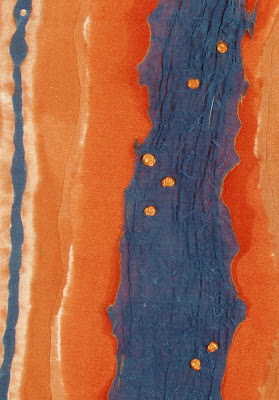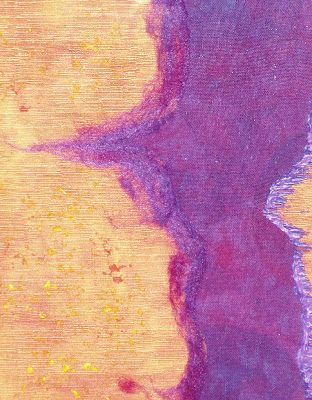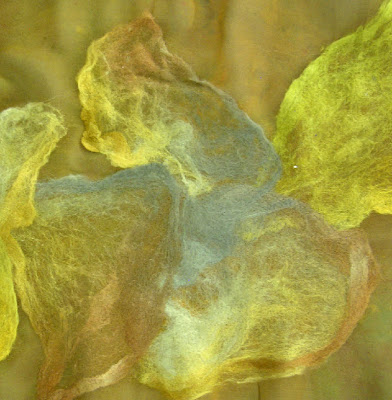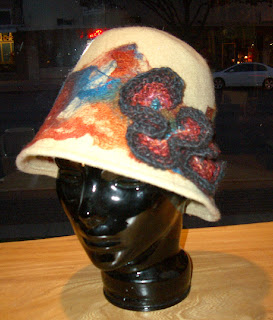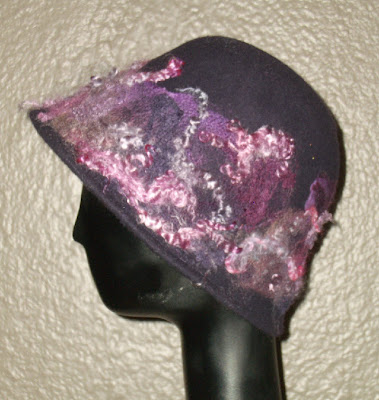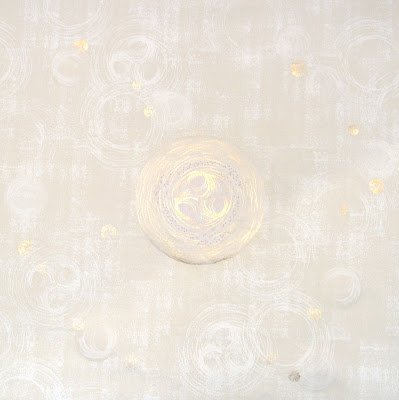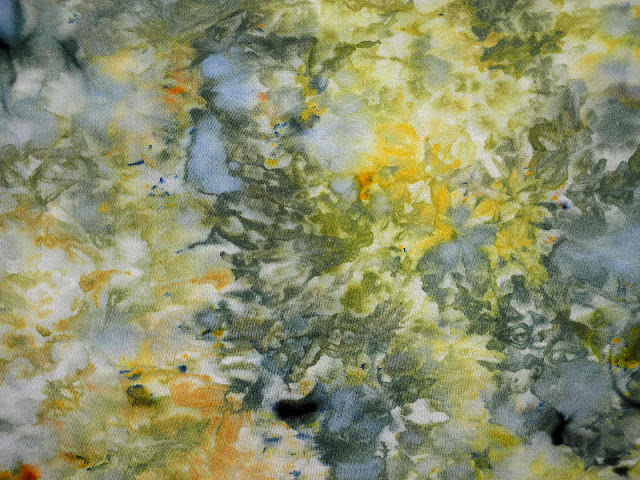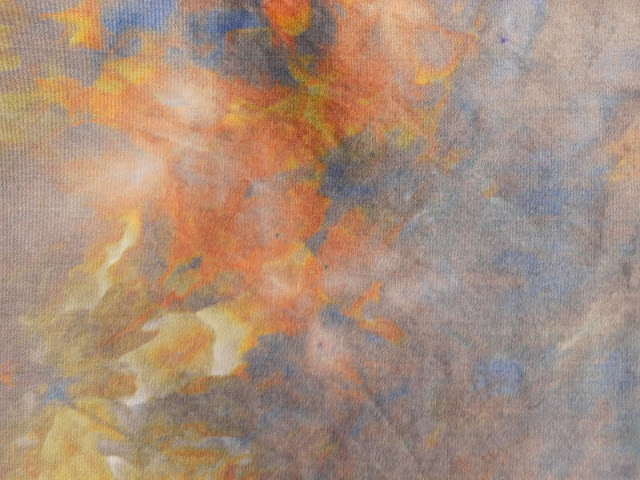I can't claim to be an expert on ice dyeing, since my first try was two weeks ago. I have dyed about 15 yards of fabric using the technique, however, so I have learned a few things.
The Ice
It takes a lot of ice. My freezer can't create cubes fast enough, so I had to buy it. And the lack of room in my freezer limited how much I could do at one time. I actually found myself wishing I lived somewhere that had snow so I could dye as much as I wanted!
I only used whole ice cubes, so I can't comment on how the pattern is affected by using crushed ice. I like the results I got, so I never bothered to crush it. I did use several types and sizes of cubes and didn't really see much difference. The tightness of the scrunching seemed to have more impact on the pattern.
I found it difficult to mound much ice on top of the fabric because I was using a flat surface, rather than a container with sides.Check out the
Quilt or Dye blog for a great way to overcome that. I ended up with a lot of spaces between the ice cubes where the cloth was exposed. More info under
The Dyes, as to why it matters.
The Dyes
I used mixed colors, since I read that they turn out more interesting that way. It makes sense - the beauty is not only the patterning, but the way the colors break out and mix and mingle together. I tried the technique with both powder and liquid dye. The powdered dye method did seemed to yield more complex and intriguing colors.
When I used liquid dyes, I mixed a very strong concentration - about 1 t dye to 2 oz. water. That resulted in medium value fabrics. When I used the powder dyes, I sprinkled on about 1 teaspoon total per yard.
When using the powdered dyes, I ended up with spots of color where the dye powder landed directly on the fabric. You may find that desirable or not. If not, use more ice and pile enough ice on top so that none of the fabric is directly exposed.
 |
| Flecks from powdered dye directly on fabric |
The Fabric
I tried a variety of fabrics: cotton sateen, cotton printcloth, Kona, silk habotai, silk noil, cotton/silk charmeuse,dobby noil, and even a 50/50 poly cotton (I thought it was all cotton). The patterning came out with a softer edge on the silks than the cotton. Both are beautiful, just different. As expected, the thinner fabrics have less patterning.
 |
| Silk habotai |
 |
| Silk/cotton charmeuse |
 |
| Silk dobby noil |
 |
| Cotton |
Time
I read that the color/pattern breakouts are due to the slow dyeing. Since I was doing it outside in 95 degree weather, it probably wasn't that slow. It took from 1-2 hours for the ice to melt, and I let it batch for 3-4 hours after that. I have not done any comparisons to see if longer batching time or longer time before the ice melts yields different color and pattern. That will be my experiment for this fall/winter.
Wash-Out
I found very little excess dye run-off. I soaked the fabric in cold water for about 10 minutes. Very little dye came out in the rinse after that soak.



